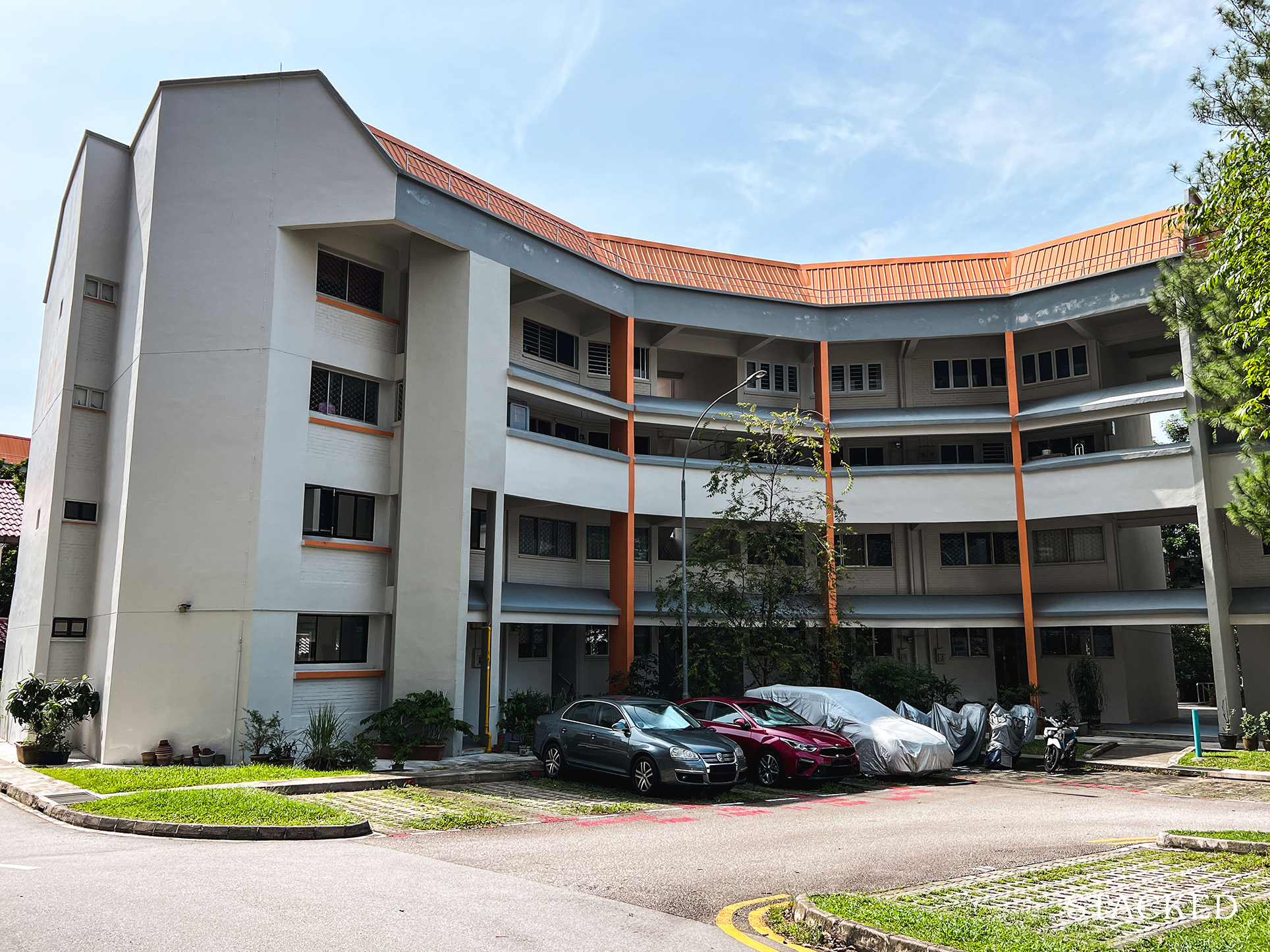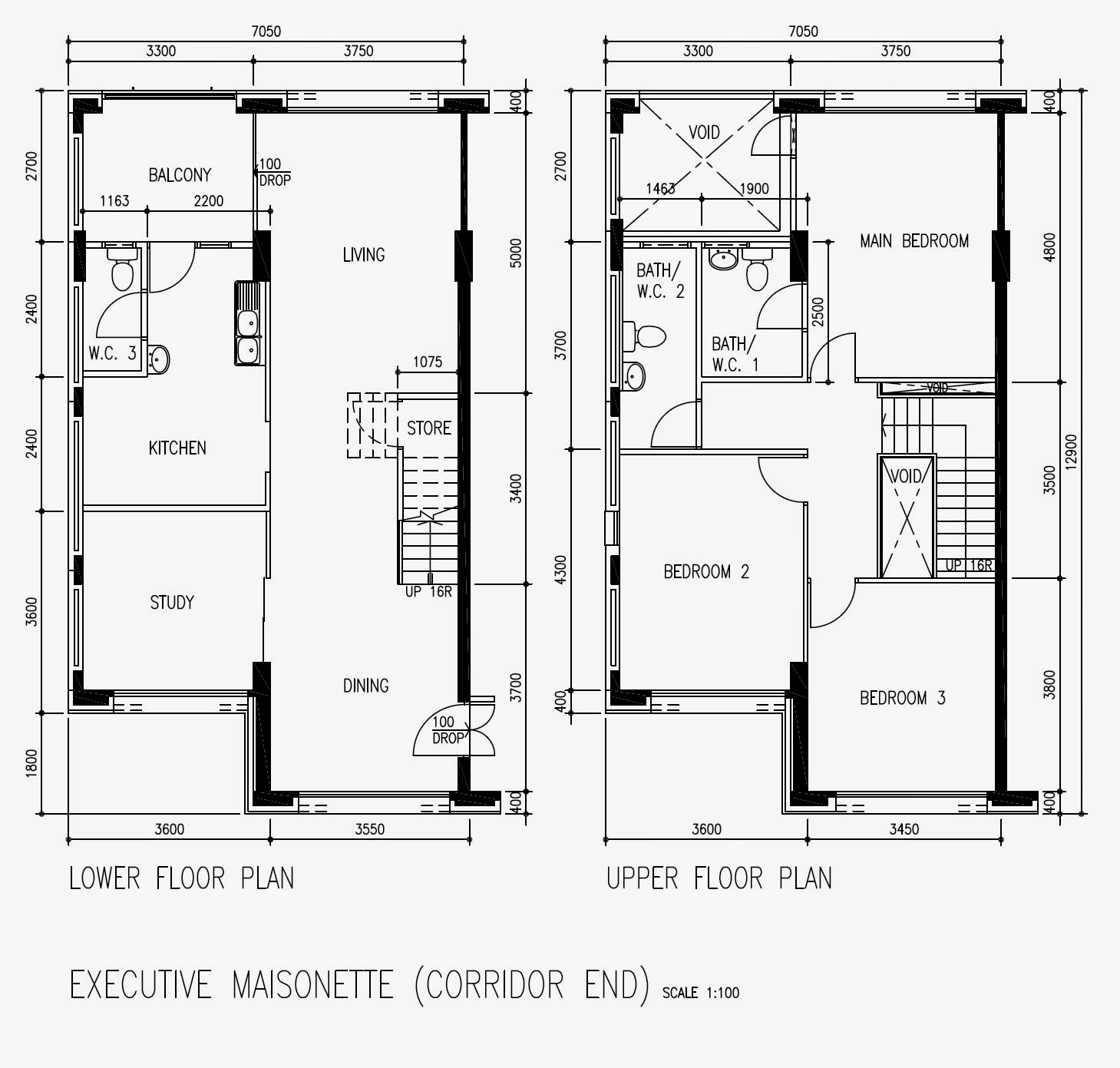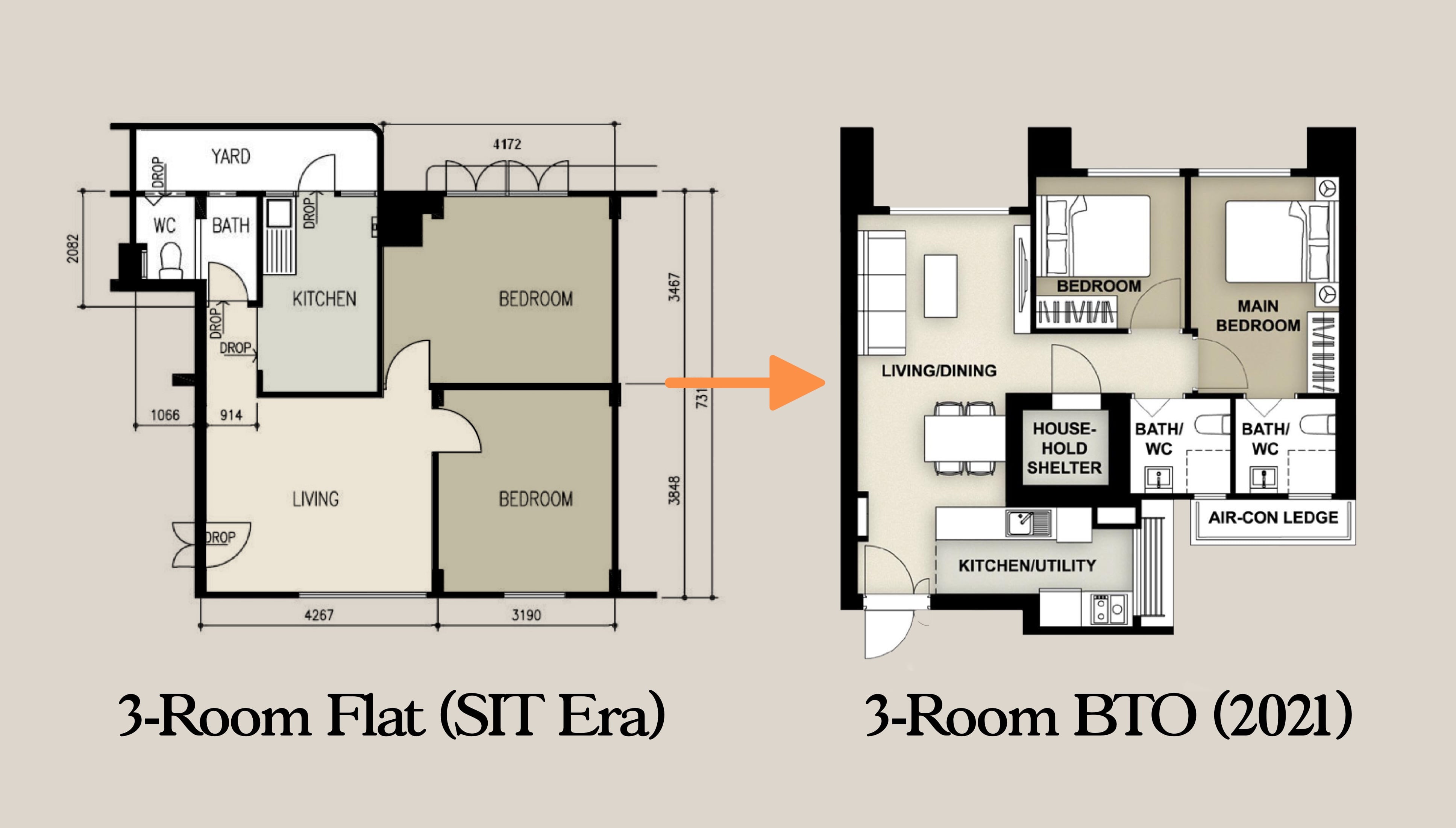Should We Build More HDB Maisonettes? 5 Convincing Reasons Why

Get The Property Insights Serious Buyers Read First: Join 50,000+ readers who rely on our weekly breakdowns of Singapore’s property market.
A seasoned content strategist with over 17 years in the real estate and financial journalism sectors, Ryan has built a reputation for transforming complex industry jargon into accessible knowledge. With a track record of writing and editing for leading financial platforms and publications, Ryan's expertise has been recognised across various media outlets. His role as a former content editor for 99.co and a co-host for CNA 938's Open House programme underscores his commitment to providing valuable insights into the property market.
HDB stopped building maisonettes way back in 1995, but Singaporeans never got over their love for it. As we’ve pointed out before, a significant portion of million-dollar flats are maisonettes; and if Singaporeans are buying them despite the advanced lease decay, then perhaps it’s worth revisiting the scheme. Here’s why we think the double-storey maisonette may be worth building again today:
Table Of Contents
- 1. An improved option for extended families
- 2. It would discourage people from buying older maisonettes with limited leases
- 3. We’ve learned enough over the years to improve the layout
- 4. A good mid-way between 5-room flats and an EC
- 5. It could encourage interest in less mature areas
- There are some potential downsides, however
Why is it a good time for the maisonette to make a comeback?
- An improved option for extended families
- It would discourage people from buying older maisonettes with limited lease
- We’ve learned enough over the years to improve the layout
- A good mid-way between 5-room flats and an EC
- It could encourage interest in less mature areas
1. An improved option for extended families
Since 2013, we’ve had Three-Generation (3G flats). Designed for extended families living together, these are 1,237 sq. ft. units. These are bigger than 5-room flats by a slim margin (the average 5-room flat is around 1,185 sq. ft.). The appeal is more in the layout than in the small space increase; 3G flats have four bedrooms and three bathrooms (two attached, one common), with a service yard.
There have been similar options like the $1.418 million loft Dawson HDB unit (where our conclusion was that there weren’t any better alternatives), or the loft unit in Punggol that was sold for $1.198 million – but given the record prices, you can just see how much demand there is for units such as these.
We do think flats for extended families will come in handy, as our population ages. It can allow for grandparents to be looked after, for example. But 3G flats have a layout with limited potential – all you’re really getting is one additional bedroom.
A maisonette allows for a dual-floor living – such as grandparents on the ground floor, immediate family on the top floor, etc. This fulfils some of the privacy needs that a 3G flat may lack, and it also allows for some different options (see point 3).
A maisonette can also provide for even larger families, for whom even a 3Gen flat might be a squeeze. From experience on the ground, we’ve met many extended families who feel a need for an Executive Apartment (EA) or jumbo flat, rather than just a 3G flat.
If necessary, we can impose the same conditions for buying a maisonette that currently exists for 3Gen flats (e.g., it can only be sold to other multi-generational families). This ensures the maisonettes will be for home ownership rather than investment.
2. It would discourage people from buying older maisonettes with limited leases
Many of the existing maisonettes are old, and will soon be halfway through the lease. Many banks won’t give out loans (or give out loans with a much lower quantum) for properties with 60 or fewer years on the lease. As such, offloading the property later may not be possible.

We’re aware that most buyers are older and consider the maisonette a “forever home” – but it’s always nice to have a backup, in the form of being able to trade down to a 5-room, 4-room, etc. in case a financial emergency happens in our old age. This is something that a 40 or 50-year-old flat may not provide.
There’s also the simple reality that Singaporeans are living longer. Over the next decade, as the leases on these maisonettes tick down, it could become increasingly risky for even 50+ year-olds to buy these units, and possibly outlive the lease.
A small number of newer maisonettes might satisfy their needs, and draw them off the older properties.
3. We’ve learned enough over the years to improve the layout
A common concern over maisonettes is the stairs, which can be tough for the elderly. This is currently true as most maisonettes have bedrooms upstairs. But we have learned a lot over the years, and can probably improve on it today.
More from Stacked
Anything Is Possible Until It Is Not – The Dangers of Procrastination
“Am I on track?” is a question you should ask yourself at regular intervals.

We could relocate a bedroom for the grandparents downstairs, for instance, leaving the upper floors to the younger members. Safety features for the elderly have also been improved, so now we can incorporate emergency ringers, or smart home features, to ensure anyone can quickly call for help; even with the double-storey layout.
Finally, for extended families that live together but want a bit more privacy, we could improve the separation between upper and lower floors, as some dual-key units do. This may not be as extreme as completely segregating both floors, but just ensuring it’s possible to move about without always being directly observed.

Property TrendsThe Evolution Of HDB Floor Plans Over The Years: For Better Or Worse?
by Ryan J. Ong4. A good mid-way between 5-room flats and an EC
In our experience, most extended families can afford an EC as well as a resale maisonette. The reason they may pick the latter is the recurring costs of ECs. HDB conservancy fees tend to stay below three digits, whereas ECs are still condos with pricey common facilities; and a three or four-bedder EC unit will still probably incur maintenance fees of $300 to $400 a month.
Besides this, a new maisonette might allow for HDB loans, whereas an EC absolutely requires a bank loan (although this would depend on HDB’s decision). Given rising interest rates and the lower cash outlay, some buyers may want to stick to HDB loans.
All this could allow a new maisonette to be a prudent choice for some families, as opposed to the expense of an EC.
5. It could encourage interest in less mature areas
A common gripe about BTO flats is that they’re all in “ulu” areas. A simple solution could be to have a handful of special flats in these less developed areas – some maisonettes, for instance, which won’t be found in more central BTO launches.
This could encourage some families to consider less mature areas, in exchange for more living space (or just a unique layout).
In some sense, this could also encourage more creativity in home design, due to the unique nature of the layout. This can create a better sense of pride in their home, and while we don’t have absolute numbers to prove this – a great number of well-designed homes that we’ve featured in our Living In series have been HDB maisonettes. Is it just by chance that they so happened to be maisonettes?
There are some potential downsides, however
On a larger scale, one problem could be that maisonettes are not as space efficient. It may be more optimal to build two smaller units in its place, for instance, to raise the available supply of housing. This is especially true if the members of the extended family, say the children, start moving out (then we need a separate unit for the children, while the family is still in an oversized unit).
Given the demand for housing today, it may seem like the more prudent thing to do would be to build as much housing in as short a time as possible, than to optimise for the best living environment. After all, the shorter the BTO process, the more it may improve our falling birth rate numbers.
For individual owners, we’re also assuming that extended family means there’s someone younger and fitter to clean the flat. A maisonette takes a lot more work to upkeep than a normal flat. As an aside to that, the renovation costs also tend to be much higher.
Nonetheless, we do think a few maisonettes for larger families could be a welcome idea. What do you think? Do let us know below, and whether you’d be interested in this form of housing. In the meantime, follow us on Stacked for in-depth reviews of new and resale properties alike.
If you’d like to get in touch for a more in-depth consultation, you can do so here.
Ryan J. Ong
A seasoned content strategist with over 17 years in the real estate and financial journalism sectors, Ryan has built a reputation for transforming complex industry jargon into accessible knowledge. With a track record of writing and editing for leading financial platforms and publications, Ryan's expertise has been recognised across various media outlets. His role as a former content editor for 99.co and a co-host for CNA 938's Open House programme underscores his commitment to providing valuable insights into the property market.Read next from Property Market Commentary

Property Market Commentary Why The Singapore Property Market Will Be Different In 2026 — And It’s Not Just About Prices

Property Market Commentary 2025 Year-End Review Of The Singapore Property Market: What The Numbers Reveal

Property Market Commentary How The HDB Resale Market Performed In 2025, And What It Means For 2026 Prices

Property Market Commentary 4 Key Trends Reshaping Singapore’s New Launch Condo Market In 2026
Latest Posts

Pro This 21-Year-Old Condo Didn’t Sell Out Initially, Yet Became A Top Performer

Editor's Pick What I Only Learned After My First Year Of Homeownership In Singapore

Singapore Property News Why More Land Doesn’t Automatically Fix Housing In Singapore

On The Market Here Are The Cheapest 4-Room HDB Flats in Central Singapore You Can Still Buy From $490K

Editor's Pick Should We Buy An Old 99-Year Leasehold Condo To Live In: Will It’s Value Fall When The Lease Runs Out?

Pro How A Once “Ulu” Condo Launched In 1997 Became A Top Performer

Editor's Pick I Reviewed A New Launch 4-Bedroom Penthouse At Beauty World

Editor's Pick Why Singaporean Families Are Looking At This Landed Enclave From Around $4M

Singapore Property News Lentor’s First Condo Is Complete — The Early Profits May Surprise You

Property Advice We Own A $800K 1-Bedder And A $1.1M 3-Bedder: Is It Possible To Upgrade To A 4-Bedder Condo?

On The Market These Are Some Of The Cheapest 5-Room HDB Flats Left In Central Singapore

Pro This 698-Unit Ang Mo Kio Condo Launched At The Wrong Time — And Still Outperformed Peers

Singapore Property News $281.2M in Singapore Shophouse Deals in 2H2025 — But That Number Doesn’t Tell the Full Story

Property Investment Insights These Resale Condos In Singapore Were The Top Performers In 2025 — And Not All Were Obvious Winners

Singapore Property News CapitaLand–UOL’s $1.5 Billion Hougang Central Bid May Put Future Prices Above $2,500 PSF


